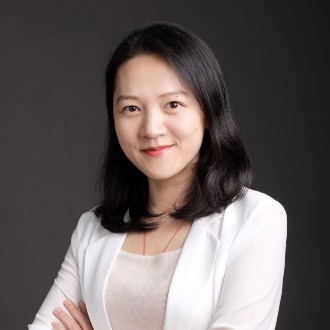Teacher Introduction

Dr. Yue Jiang
Dr. Yue Jiang is a Senior Teaching Fellow in Economics, International Business School Suzhou (IBSS). She holds a PhD in Economics from Cardiff University in the UK, her field of research lies in Macroeconomics, International Economics and Monetary Economics. She served as Deputy Programme Director of Master in Investment Management, Director of Undergraduate Studies, and currently is serving as the Director of Postgraduate Studies in IBSS.
Key Points
The Peer Assessment activity provides an opportunity of:
- Individual mark for each student assessed by peers in a group work
- Access within the module area on LM page
- Flexibility to set the marking criteria and the weights by instructors
- Anonymous input of grades and comments from a student for peer members
- Built-in algorithm to calculate a student’s mark automatically based on grades from peers.
Technology toolkit: Peer Assessment activity on the LM

Case Details
When considering group work for assessment, a common issue for all parties concerned is that not all group members contributed and/or performed equally and this is difficult to be accounted for. It could lead to free-rider problem that calls for a mechanism for this to be addressed.
To this end, peer assessment is a very helpful tool in a group-work setting. It registers the individual performance and contribution assessed by peers in the group. Provided that the peers have worked together, one can assess others, excluding or including him/herself, based on one’s best knowledge in an anonymous manner. This would work to provide penalty on free-riding that helps to address the problem.
Students are in general agreement of this approach, and provide their assessment for peers carefully. The Likert scale is easy to input. It also facilitates peer-learning and helps to develop their soft skills within curriculum learning.
In addition, there are a few commonly asked questions from students about the peer marking process. First, what should we do if we have a group member that is never available? In this case, I would explain the approach of peer assessment, and highlight the fact that, students with little contribution will not only receive low marks from peers, also, a further penalty will be implemented. This could lead to large variation of marks within the group. Students usually accept this measure.
Another question that students raised is what happens if some member in the group deliberately gives lower marks to others, so that him/herself could get a higher mark relative to others? Considering that one tends to give higher mark to him/herself, a potential solution is to exclude self-evaluation in the peer assessment, where one can only mark others. Moreover, on the ground that self-assessment is excluded, it might be helpful to explain to the students that, the algorithm takes weighted average to calculate final mark of an individual, the weights would be the same regardless of whether you give 10 or 1 for everyone else. So giving others low mark would not make your own mark higher.
This is a very helpful tool to be applied when designing group work as part of the assessment. It allows for flexibility of the instructor when setting the criteria and weights for peer assessment. It’s a very useful starting point for further exploration and tailored development.
A couple of things might be helpful:
- It is up to the instructor to determine the weight of peer assessment in a coursework. Yet as per current policy, the weight is advised to be within 50%. Further, when considering the weight of individualised marks in group work, it is advised to account for the other assessment components based on the individual work, so that the overall proportion of individualised work is higher than 65%.
- “No limit to the proportion of the overall module assessment to be assigned as group work, Proportion of overall module mark derived from individualised assessment should be 65%, Student peer-review of group work may be permitted to derive a proportion of a student’s individualised mark up to 50%”.
- Also, considering students’ input for peer-marking, it might help to set the Likert scale to 10 instead of 5 for senior year of students. This allows more detailed thinking and marking to account for the evaluation as per related criteria.
- Students’ coursework groups should be created before setting up the Peer Assessment activity. Once this is done, grouping based on coursework groups should also be created and set up as the grouping restriction in the Peer Assessment activity, so that they are not mixed up with other default groups on learning mall, such as lecture/tutorial groups.
- One evaluation criteria is fine, there could be multiple criterion. Personally, I have applied two dimensions: “performance” to account for the quality of individual work, “contribution” to register the quantity of work. Additional measure(s) could be considered, for instance if the instructor has monitored the overall process of group work, or leadership role has assigned to certain member(s).
– For detailed information and resources about Peer Assessment activity, you can search for ‘Peer Assessment Information Portal’ on Learning mall.
– Other resources: Group management in Learning Mall system.





Overview
In the assessment of students’ group coursework, Dr. Yue Jiang has applied Peer Assessment activity on Learning Mall as a tool to individualize the assessment of performance and contribution among the group members. This addressed the problem of measuring individual contribution and evaluating individual performance in a group work, and helps to alleviate the free-riding behaviour.
When a task is assigned for a group to complete, submission can be based on groups, where an overall grade is provided for the performance of the group that carries a certain weight. Alongside this, there can be individual mark awarded for each member based on the assessment from the peers within the group, through Peer Assessment activity on LM. This allows the instructor to specify the criteria that an individual is assessed upon, together with the grade scales and comments from peers. The final overall grade for each group member is calculated by selected algorithm.